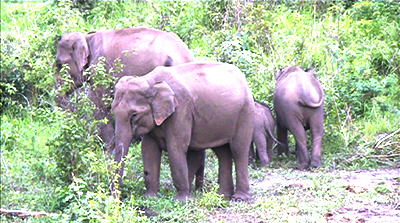 There are 678 elephants in the country, according to the second edition of the National Elephant Survey Report. This is an increase of 165 elephants recorded by a survey conducted in 2011.
There are 678 elephants in the country, according to the second edition of the National Elephant Survey Report. This is an increase of 165 elephants recorded by a survey conducted in 2011.
The report was launched yesterday coinciding with the World Elephant Day in Sarpang.
The elephants in the country are found in Southern regions of Samtse, Chhukha, Dagana, Phibsoo Wildlife Sanctuary in Sarpang, the Royal Manas National Park and the Jomotshangkha Wildlife Sanctuary.
“While we celebrate the increase in the number of elephants and their intact habitat, we should not forget that our farmers in southern regions are bearing the brunt of the growing human-elephant conflict,” Singey Wangmo, the Park Manager of Royal Manas National Park Office in Gelegphu, said.
“The sectors heads, villagers, the department of forest and wildlife rescue and rehab centre should not only come together to resolve the Human-wildlife conflict but also work towards a sustainable solution to address the issue.”
The country representative of World Wildlife Fund (WWF) of Bhutan, Dechen Dorji, said the report would be helpful in understanding the home range of elephants, their migration pattern and habitat utilization to provide innovative solutions for human-elephant co-existence.
“The WWF has adopted a SAFE system to manage human-wildlife conflict and we already have a strategy to address the issue. We will be working closely with all the stakeholders to resolve this conflict.”
The Chief Forestry Officer of the Nature Conservation Division of the Department of Forest and Park Services, Sonam Wangdi, said, the elephant conservation efforts in Bhutan need to focus on maintaining continuous forest cover and striking a balance between conservation and development.
About World Elephant Day
 The World Elephant Day is commemorated on August 12 every year. The day draws attention to the numerous threats that the elephants face and calls for better conservation and protection of the magnificent creature.
The World Elephant Day is commemorated on August 12 every year. The day draws attention to the numerous threats that the elephants face and calls for better conservation and protection of the magnificent creature.
It was first observed in 2012 to bring attention to the urgent plight of Asian and African elephants.
Poaching, habitat loss, human-elephant conflict and mistreatment in captivity are just some of the threats to both African and Asian elephants.
Working towards better protection for wild elephants, improving enforcement policies to prevent illegal poaching and trade of ivory, conserving elephant habitats, better treatment for captive elephants and, when appropriate, releasing captive elephants into natural, protected sanctuaries are the goals that numerous elephant conservation organizations are focusing on around the world.












